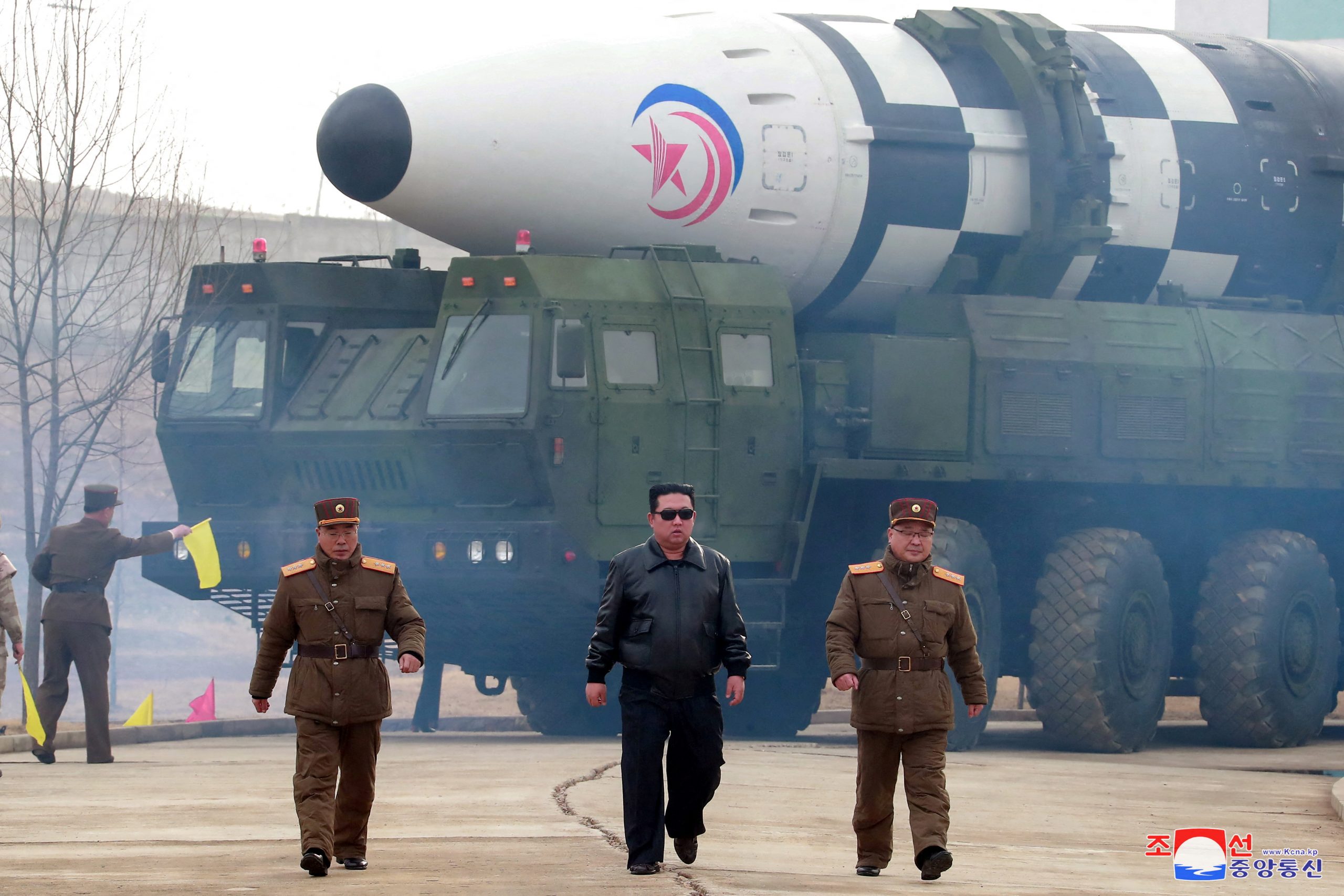
Lauren Moye, FISM NEWS
[elfsight_social_share_buttons id=”1″]
North Korea isn’t content to let Russia and China have the spotlight when it comes to aggressive and potentially destabilizing behavior toward their neighbors. On March 24, the Democratic People’s Republic of Korea (DPRK) initiated another intercontinental ballistic missile test. The given reason? They are preparing for confrontation with U.S. imperialism.
DPRK state media claims the Hwasong-17 ballistic missile flew for 681 miles and reached a maximum altitude of 3,905 miles. They claim the missile precisely hit the intended target located in the sea west of Japan. South Korea and Japanese military data confirm the missile performed better than any previous North Korean ballistic test.
It’s the first long-range testing that the DPRK has conducted since imposing a moratorium on themselves in 2017. State media reported that Kim Jong Un stated the test was in preparation for a long confrontation with U.S. imperialism, and its strategic force was ready to check and contain any military attempt by the States.
The concern is that the Hwasong-17 marks another step in a Pyongyang weapons development program that might deliver nuclear warheads into the States.
White House Press Secretary Jen Psaki released a statement the day of the missile test: “The United States strongly condemns the [DPRK] for its test of a long-range ballistic missile.”
She described the test as a “brazen violation” of U.N. Security Council resolutions and accused the DPRK of prioritizing “weapons of mass destruction and ballistic missile programs” over the lives of its people by needlessly escalating tensions with neighboring countries.
“The door has not closed on diplomacy, but Pyongyang must immediately cease its destabilizing actions,” Psaki stated, before warning, “The United States will take all necessary measures to ensure the security of the American homeland and Republic of Korea and Japanese allies.”
While Thursday marks the first successful test of the missile, U.S. intelligence officials noted there had been attempts at testing the Hwasong-17 missile on both Feb. 27 and March 5 but not at “full-range” capabilities.
Additionally, a DPRK March 16 missile test exploded in mid-air soon after launch according to South Korea. Pyongyang never publicly admitted that failure.
However, some analysts say that some video footage shared on state media better matches the shadows and lighting from March 16 morning launch rather than Thursday’s early afternoon test. While the fact that a missile was tested is not in dispute, the usage of this footage has generated doubts about North Korea’s narrative of events.
“Multiple pieces of visual evidence suggest North Korea’s version of events is misleading at best, and possibly a complete fabrication of a successful Hwasong-17 test at worst,” NK Pro, a Seoul-based research website that tracks North Korea, said in a report.
Some analysts suggest that Pyongyang might have used an older missile on March 24.
“While this does not mean that the March 24 test was a Hwasong-15, it does raise questions,” Michael Duitsman, a researcher at the James Maritn Center for Nonproliferation Studies, said.
